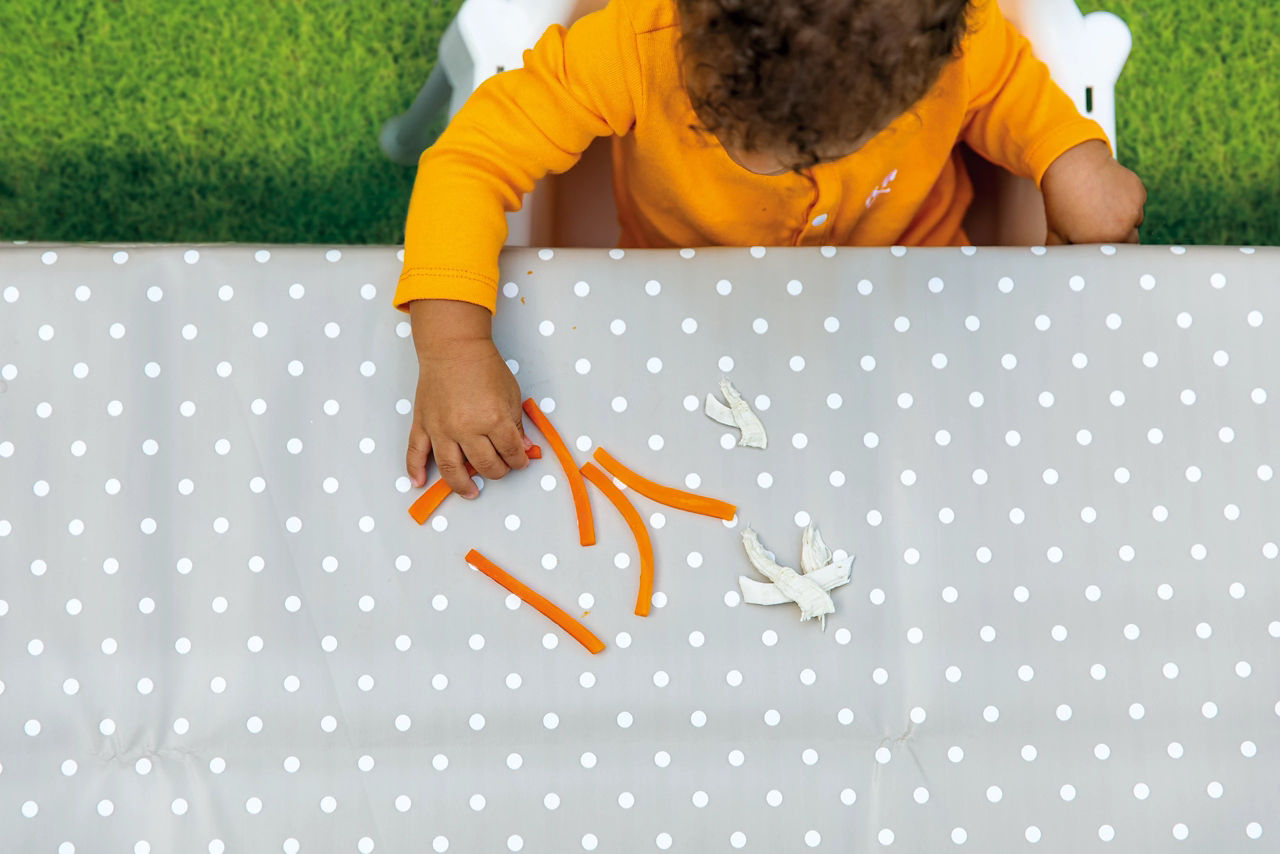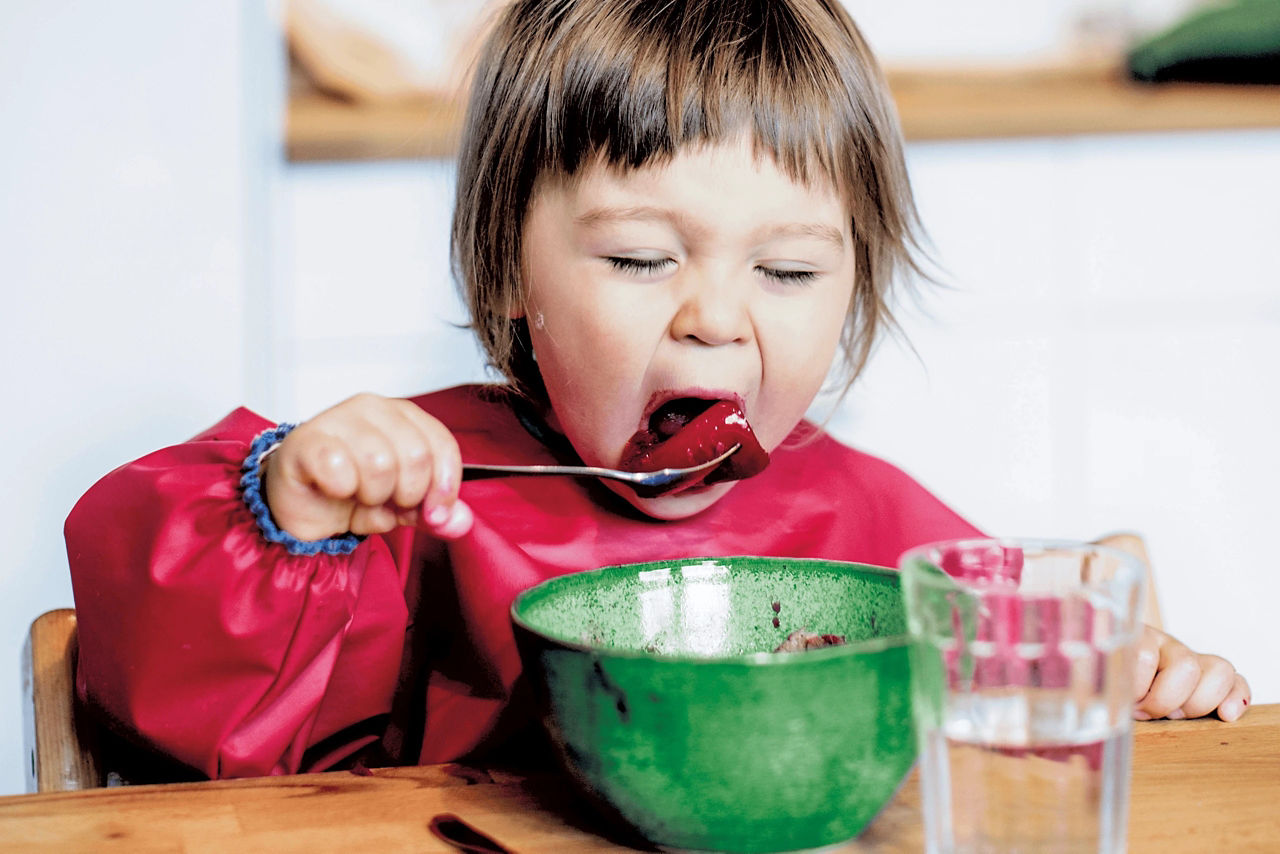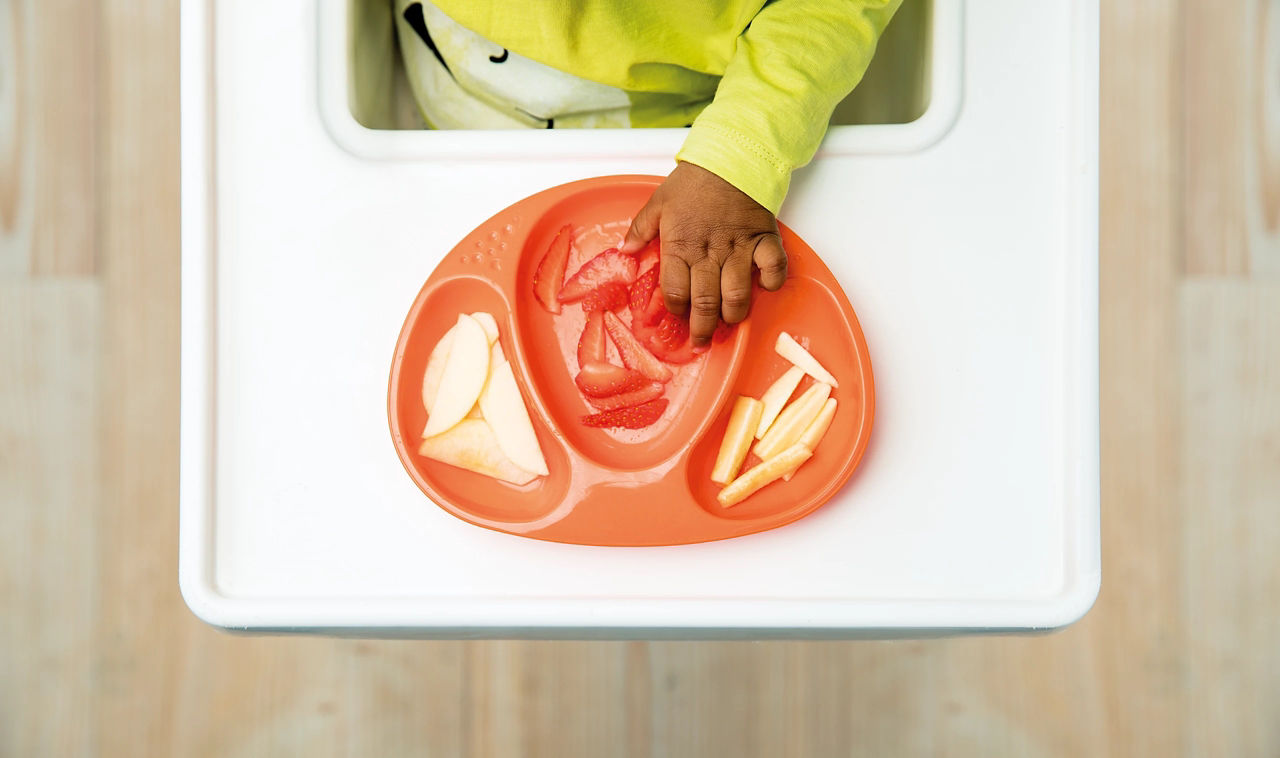Free weaning plan - Register here
My baby won’t eat!
It’s on the floor. It’s in your hair. In fact, your baby’s food is ending up everywhere but their mouth. Or maybe your baby loves pear purée but isn’t so keen on parsnip? Sound familiar? No need to stress. Almost all babies go through a fussy-eating phase at some point. As long as they’re happy, growing and developing at the right pace, there’s nothing to worry about.

The most important thing to do is to keep offering a variety of sweet and savoury flavours to make sure they get more variety into their diet – and the maximum goodness from their food. It’s important to keep offering plenty of veggies to help them learn to enjoy the natural taste of vegetables.
It can take around 8-10 attempts before they learn to love a new flavour1,2. Just take it slowly and don’t give up! The more simple veggie flavours they taste now, the more likely it is that they’ll love them later3.
Take it slowly
No matter how frustrating you find it, it’s best to let them set the pace, however slow it may be.
 Do not leave your little one unattended when eating and drinking
Do not leave your little one unattended when eating and drinking
Always trust your little one when they tell you enough is enough – they might squirm, lose interest, spit food out, or even hold their food in their mouth. Just take a deep breath and go with the flow.
Top tips for reluctant eaters
Introduce your baby to family mealtimes – seeing their family enjoying meals can help your baby learn to love good food.
?ts=1701080532312&dpr=off)
- Try giving them food when they’re alert and happy, rather than tired. Mid-morning is often a good time.
- Give them a taste of what's to come by putting a blob of food on the table or their highchair tray. Let them squish it around and look at it before you feed it to them on a spoon.
- Let your baby feed themselves, whether with a spoon or soft finger foods. Or have two spoons – one so you can concentrate on getting the food into their mouths and the other for them to experiment with (messy, but fun!).
- Praise your baby for eating well and use gentle encouragement when they don’t.
- Switch off the telly, turn down the tunes, and move games and other distractions out of the way – a calm environment will help your baby focus on the task in hand.
- Making feeding fun by serving their food in shapes or faces on the plate
- Leading by example – try a bit yourself and make ‘yummy’ noises so your baby understands it’s a tasty thing to eat and wants to copy you.
- Offering small portions of different tastes at mealtimes so if they don’t like one thing, they can try something else (though this shouldn’t always be their favourite food).
- Smaller portions are also less daunting – you can always offer a bit more if they really enjoy a new food!
- If your baby spits it out, be patient and try again another day – perhaps mixed in with a little of their favourite food. It's a long process, but your baby will thank you in the end!
Remember, when you’re just getting started, breast milk or infant formula fulfils all their nutritional needs, so don’t worry about how much they eat. You’re just trying to get your baby used to new textures, tastes and smells. So embrace the mess and have fun with it.
- Maier A et al. Effects of repeated exposure on acceptance of initially disliked vegetables in 7-month old infants. Food Qual. Prefer. 2007; 18(8): 1023–1032
- Sullivan SA & Birch LL. Infant dietary experience and acceptance of solid foods. Pediatrics 1994; 93(2): 271–277.
- Chambers L et al. Reaching consensus on a ‘vegetables first’ approach to complementary feeding. Nutr Bull 2016;41:270-276.
Last reviewed 09.07.2020
Reviewed by Nutricia’s Medical and Scientific Affairs Team
Do not leave your little one unattended when eating and drinking
Any more questions?
Our specialist baby advisors and experienced mums are here to talk and ready to help whenever you need them. You can call us or reach us on Live Chat 8.30am-5.30pm Monday-Friday.
Phone
Call 1800 570 570
FAQs
For all the latest information
Email Us
Send us an email
8.30 am - 5.30pm Monday-Friday



